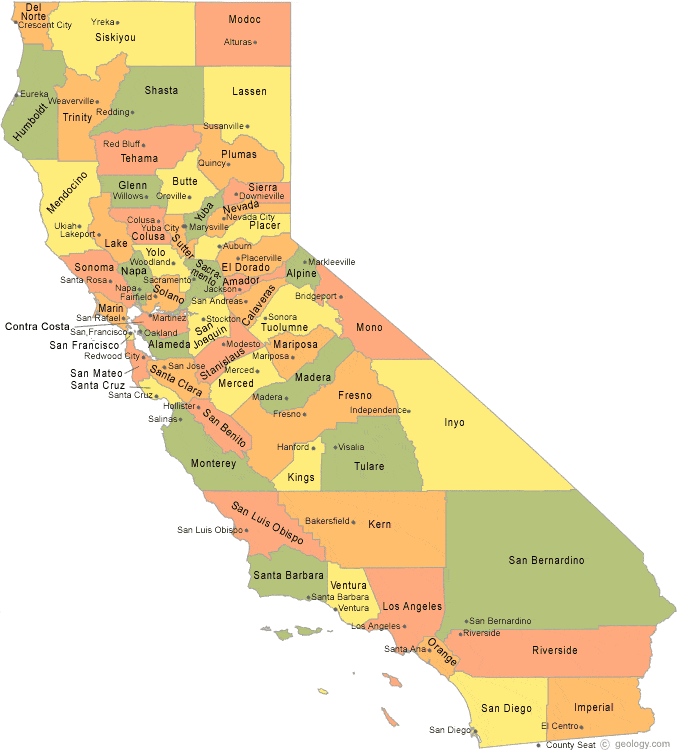
Curious to know how many counties California actually has? You’re certainly not the only one. From trivia nights to travel planning, the answer—58—comes up again and again, and stillthat short answeronly tells half the story.
This network of counties makes upa tapestry of extremes: surf-washed beach cities, pine-covered mountain regions, fertile Central Valley breadbaskets, and thriving tech metropolises. Each county carries its own story, shaped byrailroad expansion, high-tech revolutions, and relentless population booms.
Throughout this guide, we’ll unpackthe timeline that locked the total at 58, the services counties deliver day-to-day, and the outliers that set fascinating records. By the end, you’ll have the numbers—and sound like a local expert with confidence.
Origins of California’s 58 Counties
On statehood day in 1850, the map was a patchwork of just 27 jurisdictions. An unprecedented population boom pushed officials to subdivide vast districts. By the end of the 1870s, the count had risen to over five dozen counties, and by 1907 the final five were added, locking in the canonical figure of 58.
Legislative records show that many break-away regions were born because of three overlapping forces:
- Sheer distance left settlers days from the nearest courthouse.
- Revenue battles pitting ranchers against merchants triggered secession campaigns.
- Language and immigrant communities wanted self-rule.
By 1920, the political map hardened. Today, even bold secession schemes rarely get ballot traction, leaving historians to label the era of county making a finished chapter.
Landscape and Climate Diversity Across California Counties
Stretch a string from rugged Del Norte on the Oregon line to border-side Calexico, and you’ll thread through dozens of ecosystems. Coastal counties benefit from marine layers and mild winters, while basin counties in the Central Valley bank on irrigation.
- Alpine districts such as El Dorado, Tuolumne, and Sierra receive winter snows.
- Delta counties balance peat islands and orchards.
- Channel-coast administrators like Ventura manage marine sanctuaries.
Such variety explains the stark fiscal gaps between counties. Climate, after all, shapes crops and careers.
What Counties Actually Do
Within the state’s tiered system, municipalities handle zoning, but counties shoulder crucial baseline services that keep daily here life humming. Life’s paperwork trail—marriage licenses, tax rolls, voter registries—all sit at the recorder-assessor’s office.
Elected sheriffs patrol towns too small for police forces, while trial courts hear felony cases. Public-health branches distribute food assistance. Funding debates fill chamber galleries with activists.
Example: Contra Costa’s Shared Services Model
Contra Costa partners with nearby cities for animal control, highlighting how elastic the system is. There’s no single blueprint when budgets span five figures to double-digit billions.
Ultimately, county halls bridge Sacramento’s big laws and local reality. Grasping their portfolio helps residents demand accountability.
Population, Economy, and Record-Holding Counties
The state shelters over 39 million residents, but those citizens is far from evenly spread. Los Angeles County alone hosts more than one resident in four. Conversely, remote Alpine rarely tops 1 200 inhabitants.
- Top headcount: County of Los Angeles
- Smallest by residents: Alpine County
- Widest landmass: San Bernardino
- Smallest area: City & County of SF
Economically, the disparities are just as sharp. Tech-centric jurisdictions see venture cash flow in at record rates, while Central Valley breadbaskets face commodity price swings. These fiscal contrasts informs legislative redistricting every decade.
Memorising these recordsmakes relocation plans simpler: tax rates, job prospects, and lifestyle perks hinge on county lines.
An Epic 58-County Road Trip
County-collecting hobbyists, visiting every single county is the new bucket-list quest. The classic route begins in San Diego, heads north along Highway 1, jogs east near Monterey, then cuts a diagonal across nut groves and tomato fields, before ascending into the Sierra Nevada for historic gold-rush hamlets.
Regional Mini-Loops
- Southern Swing – Border to wine country; a baker’s dozen of stops in four days.
- Heartland Stretch – Bakersfield up to the delta; eight hours of orchards.
- Shasta & Siskiyou Turn – crater-rim roads; hidden hot springs.
Finish the circuit in Imperial, with quadruple-digit odometer gains. At that point, you can confidently claim you know “how many counties California has”—because your copyright stamps prove it!
California County FAQ
Below you’ll find concise answers to the most common county-related queries.
How many counties are in California?
Government documents list 58 counties—no more, no fewer. Regardless of the source—be it Sacramento archives or federal census data: 58 in all.
Most populous California county?
The population heavyweight is Los Angeles County, housing roughly one in four Californians. Its size stems from historic migration waves, a diverse economy, and global cultural pull.
Least populous California county?
The crown for smallest population goes to Alpine County, with fewer than 1 200 inhabitants. Location along rugged mountain corridors keeps growth modest, making it a haven for solitude seekers.
Largest county by land size?
San Bernardino County spans the most ground covering a footprint larger than nine U.S. states. You can drive for hours without leaving its borders—crossing ski slopes, dunes, and bedroom communities.
How did California end up with 58 counties?
The current tally emerged from 19th-century partitioning, ending when Imperial County formed in 1907. Every modern effort to create a new county stalls in committee or dies at the ballot box.
Can new counties still be created in California?
Legally, yes—state law allows it, yet practical barriers loom large. A break-off region must gather local signatures, win a majority vote in each affected county, and secure legislative approval. Hence, California has remained at 58 for generations.
Which responsibilities fall to county governments?
Behind the scenes, counties keep daily life functioning: property assessments, public hospitals, welfare programs, and jails. Without county infrastructure, everything from jury duty to restaurant inspections would grind to a halt.